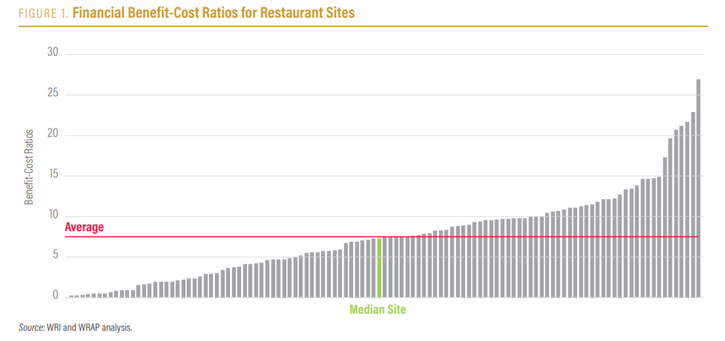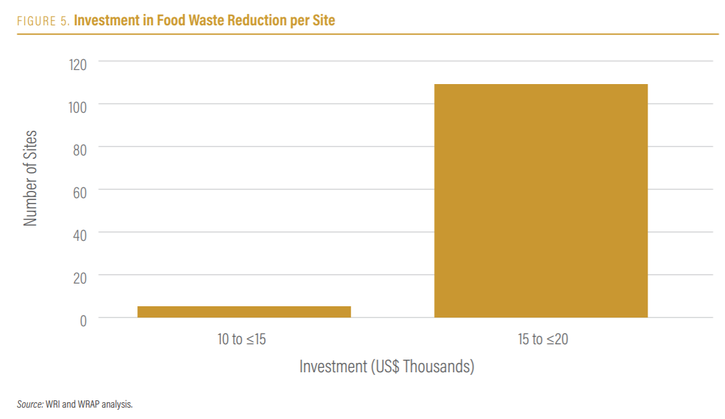- Food Waste
- Organic Waste
- Commercial Waste
- Waste Reduction
- Waste Management Finance
- Waste Management Business
Report: How Restaurants Saved Money by Reducing Food Waste
According to a new Champions 12.3 report, for every $1 restaurants invested in programs to reduce kitchen food waste, on average they saved $7 in operating costs.
A new report entitled “The Business Case for Reducing Food Loss and Waste: Restaurants” by Champions 12.3, in partnership with Walmart Foundation; Ministry of Agriculture, Nature, and Food Quality of the Kingdom of the Netherlands; Richard Swannell of Waste and Resources Action Programme (WRAP); and Austin Clowes and Craig Hanson of World Resources Institute, reveals there is a compelling business case for restaurants to reduce food waste. For every $1 restaurants invested in programs to reduce kitchen food waste, on average they saved $7 in operating costs.

The report includes an evaluation of financial cost and benefit data for 114 restaurants across 12 countries, revealing that nearly every site realized a positive return on its investment to reduce food waste. Within just one year, the restaurants had reduced food waste from their kitchens by 26 percent on average, and more than 75 percent had recouped their investment. The restaurants range in size from mom-and-pop cafés with annual food sales of $400,000 to multimillion-dollar restaurants with annual food sales of $17.3 million.
The types of investments restaurants made included measuring and monitoring the amount of food wasted, training staff on new food handling and storage procedures and redesigning menus. Every site was able to keep their total investment below $20,000. This shows that the cost of change was low, and the benefits were high for all businesses assessed.

The 7:1 return on investment comes from buying less food and thereby reducing purchase costs, increasing revenue from new menu items developed from leftovers or foods previously considered “scraps” and lower waste management costs.
“The only way we can halve food waste by 2030 is if restaurants and other businesses along the supply chain step up their action. Every part of the food industry has a responsibility to reduce food waste,” said Dave Lewis, group chief executive of Tesco and chair of Champions 12.3, in a statement. “These findings make it crystal clear that reducing food waste isn’t just the right thing to do, it’s also the smart business move.”
For example, IKEA restaurants serve 680 million people each year. IKEA has prevented more than 1.4 million kilos of food from being wasted since 2016, when the company started an initiative to halve food waste across its 400-plus restaurants worldwide. That is equivalent to saving more than 3 million meals worth of food.
“These figures confirm what we have seen at IKEA: reducing food waste goes hand-in-hand with reducing costs,” said Michael La Cour, managing director at IKEA Food Services AB, in a statement. “We view fighting food waste not only as an opportunity to create a better world but also a great business opportunity. We’ve been able to significantly reduce food waste in our restaurants by setting short-term, actionable goals. It’s a strategy everyone can do, and if more food businesses take on the challenge, they can see similar results.”
Globally, one-third of all food produced is never eaten, which has tremendous economic, social and environmental consequences. Food loss and waste is responsible for $940 billion in economic losses and 8 percent of global greenhouse gas emissions annually. At the same time, some 800 million people do not have enough food to eat.
The report recommends restaurant owners and managers take a “target, measure, act” approach to reduce the amount of food wasted from their kitchens. It outlines five action steps for restaurant managers, based on interviews with those who have implemented successful food waste reduction programs:
Measure the amount of food being wasted to know where to prioritize efforts.
Engage staff.
Rethink inventory and purchasing practices.
Reduce overproduction.
Repurpose excess food.
By working together, businesses may also be able to share new best practices to make an even greater impact and put businesses on a trajectory to halve food waste in line with the United Nation’s Sustainable Development Goal Target 12.3.
About the Author
You May Also Like


